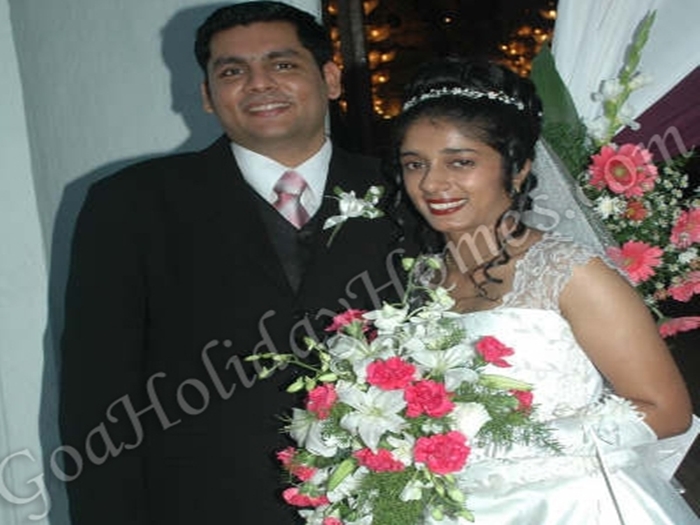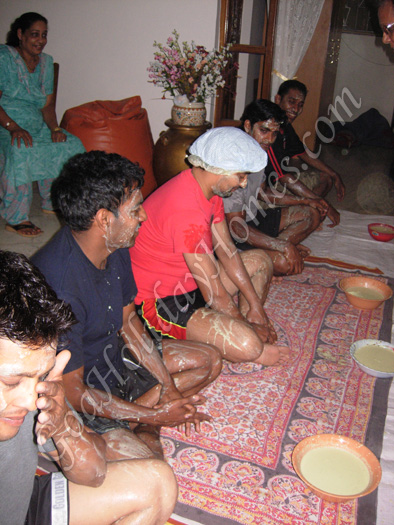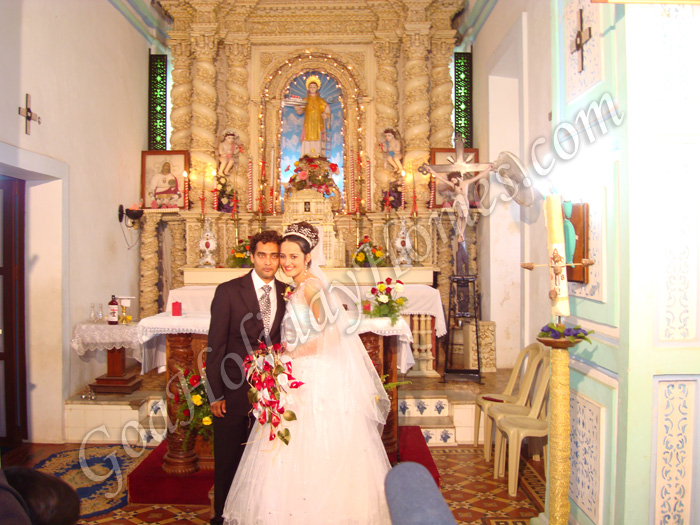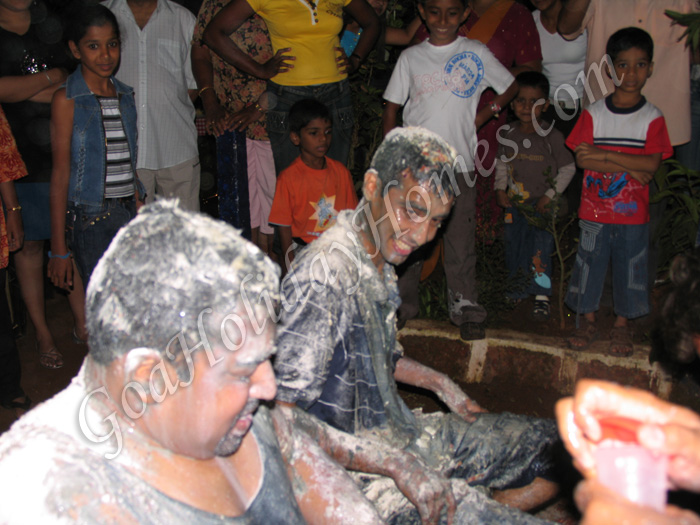The Goan Catholic Wedding
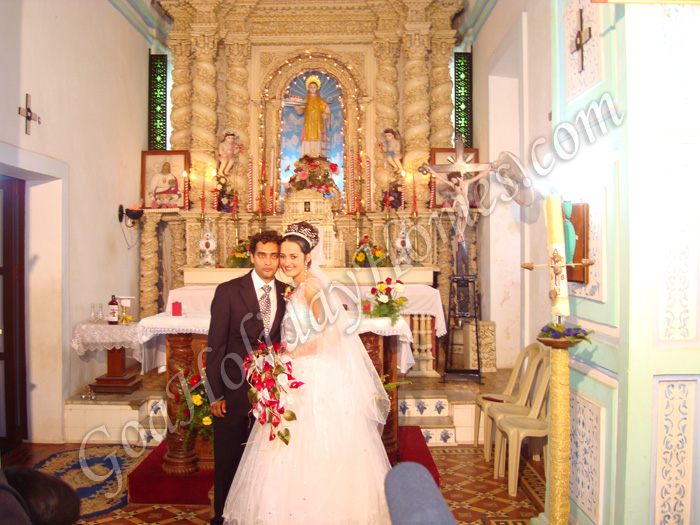
The Catholic wedding in Goa involves many customs and traditions that captures the happiest times of the Goan people.
In the earlier days a middle person known as a 'Mali' or 'Raibari' used to arrange the marriage by taking a proposal to the boy's or the girl's family. These days very few marriages are arranged this way and a family directly goes with a proposal if they like the boy or the girl. Next after they agree, a decision called 'Utor' or promise is taken by the families whereby they discuss the details of the wedding that include the dowry to be given to the bridegroom.
The engagement is then traditionally held at the groom's place and takes place with the exchange of rings in the presence of family members, priests, relatives and friends. The bridegroom's ring is taken in a special box that has an Infant Jesus statuette. The bride's parents also put some money which represents the amount of dowry at the bottom of the box. This is counted by an elderly family member who is known as 'yezman'.
After this all the wedding preparations actually start. Relatives of both, the bride and the groom go shopping on a particular day to purchase fabrics for the bridal gown, the 'saddo' and the dress material that the bride has to wear on the next day of the wedding.
According to the existing Portuguese Civil Code the next step for the couple is Civil Registration which is done at the Civil Registrar's office, in the presence of parents, close relatives and two witnesses. Within a period of three weeks thereafter the public can raise and submit objections if any, as the Registrar affixes a notice on the board inviting them to do so.
Next the wedding banns are read in the church on three consecutive Sundays just some weeks before the wedding. If there is no time to read all three banns then one or two may be read. This informs the public of the impending marriage and they can bring out the objections if any.
After the first bann is read, on the very same day the bride is supposed to wear the 'Chuddo' in her maternal uncle's house who is supposed to invite her for lunch. The 'Chuddo' ceremony takes place here where the bangle seller i.e. the cankonkar comes to the house and fits bangles on the bride's hands in the accompaniment of 'zoti' which are special commemorative songs. The bangles worn are green in colour with yellow lines and it symbolizes the married life of the bride. Thus they should not be broken and the bride is not expected to do any work due to this. The bangle seller is paid some money for his services along with a measure of rice, one coconut and some bananas.
After this another ceremony known as 'Roas' is held on a day before the wedding. Here the bride and the groom, each at their respective residences are required to bathe in coconut water. For this the first coconut juice called 'apros' is used. According to Goan tradition coconut milk is poured even on the bridesmaids and the best men. Relatives and friends attending the function apply the roas to the bridal couple which symbolizes purification and signals the end of spinsterhood and bachelorhood. After this it is said that the couple should not go out of the house till the wedding day. A sweet dish made of rice, coconut and jaggery known as 'atoll' is served to the guests at the end of the Roas ceremony.
In honour of the departed souls of the house a lunch known as 'Bicareanchem Jevonn' is held. Before the cooking of this meal begins, a senior member of the family breaks a coconut in front of the house. The speciality in this lunch is a spicy aromatic dry prawn curry known as 'samarachi koddi' that is cooked with dry unripe salted mango (mango sol). 'Voddes' made of rice and urid dal are also served. A sweet made of wheat and sugar cooked in coconut juice known as 'soji' and another made of gram dal, coconut juice and jaggery known as 'Vonn' is also served. For this meal special paddy is boiled and all this is accompanied by zotis'.
On the wedding day, a close relative of the groom who is supposed to help the bride dress up comes to her house with the wedding dress and other items. Before going to the church all close relatives and friends bless the bride and the groom in their respective residences. The wedding car comes to pick the bride after reaching the groom to the church. Here at the nuptials the couple declare the wedding vows and the priest then pronounces them man and wife.
After this on their return from church, the newly wedded couple comes to the groom's house and the groom's mother puts a gold chain on the bride's neck and places the 'saddo' on her shoulder. Prayers are recited or sung, an example of the Tedeao.
Tedeao
Laudate Domino, omnes gentes,
Laudate eum Omnes populi
Quonian Comfirmate et super nos
Misericordia ejus
Et Veritas Dominie manet iu eternu
Gloria Patri it Falio, et spiritui Sauto
Siput erat iu principio
Et nune et semper
Et iu secula Seculorem
Amen.
They then proceed to the venue for the reception where the wedding cake is cut and all dancing and merrymaking takes place with food and drinks being served. A toast is also raised for the happiness and prosperity of the married couple.
At the end of the reception all relatives and friends of the bridal couple who have remained till the end draw an imaginary line known as 'xim'. The bride's family assembles at one side and the groom and his family on the other. Prayers are offered and later few of the bride's relatives cross the 'xim' and formally invite the couple to the bride's house the next day which is called 'apovnemn' in Konkani. Thus all the festivities and celebration of the wedding come to an end after the reception.

